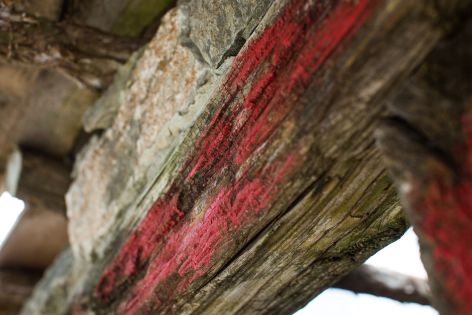When Should the Passover Be Observed?
Jesus observed the Passover with His disciples at the beginning of Nisan 14, while Jewish tradition places it near the end. Which timing is correct?

Twilight—the time between sunset and complete darkness—was when the Passover lamb was to be slain.
According to Scripture, when is the Passover to be observed?
Leviticus 23:4 reveals the proper timing: “On the fourteenth day of the first month at twilight is the Lord’s Passover.”
In the New Testament, the Gospels show that Jesus observed the Passover at the beginning of the 14th, the evening before His crucifixion (Matthew 26:18-19; Mark 14:13-14; Luke 22:8-9).
Scripture mandates the Passover be observed at “twilight” on the 14th of Abib/Nisan (Exodus 12:6; Leviticus 23:5; Numbers 9:5; Deuteronomy 16:6).
Why do Jewish practices differ from Jesus’ timing, and does it matter?
The importance of timing
Missing a scheduled event—like a job interview or flight—has consequences. I once showed up at the airport a day early due to a misread itinerary. After some confusion, I caught the same flight the next day. In that instance, all it cost me was some embarrassment and an extra hotel night.
But God sets the schedule for His annual feasts, and timing matters.
In Exodus 12, God instituted the Passover when Israel was still in bondage in Egypt. On the 14th day, at twilight, they were to slaughter a lamb, mark their doorposts with its blood and roast and eat it that same night (Exodus 12:5-8). The Passover lamb prefigured Jesus Christ, “the Lamb of God who takes away the sin of the world” (John 1:29).
(To learn more about this connection, read “Why Is Jesus Called the Lamb of God?”)
On the 14th day, at twilight, Israel was to slaughter a lamb, mark their doorposts with its blood and eat it that same night.
The Hebrew phrase translated “twilight” is bein ha’arbayim. This is a very interesting phrase that has caused much debate and confusion over the years. It literally means “between the evenings.”
The Darby Translation translates the phrase a bit more directly: “And ye shall keep it until the fourteenth day of this month; and the whole congregation of the assembly of Israel shall kill it between the two evenings” (emphasis added throughout).
Deuteronomy 16:6 adds some clarification to what “between the two evenings” means: “You shall sacrifice the Passover at twilight, at the going down of the sun, at the time you came out of Egypt.”
Numbers 9:3 says, “On the fourteenth day of this month, at twilight, you shall keep it at its appointed time. According to all its rites and ceremonies you shall keep it.” In order for all the rites and ceremonies of the Passover (killing the sacrifice, roasting it, eating it, burning any remnants that remained until morning) to occur on the 14th day, the killing of the sacrifice had to occur at the beginning of the 14th day.
Many Jews interpret the phrase “between the two evenings” to mean the period from noon to sunset. However, other scholars argue it refers to the time between sunset and complete darkness, which marks the beginning of the day.
This difference in interpretation helps explain why Jesus observed the Passover at the start of the 14th, while the Jewish authorities observed it later that same day.
This also helps explain why modern Judaism observes Passover on the 15th of Nisan. The traditional Jewish teaching is that the lamb was slain in the afternoon of the 14th, and the Passover meal was eaten after sunset—at the start of the 15th.
This places the observance a day later than both the Old Testament command (to eat it on the 14th) and the example set by Jesus.
Differing interpretations of “between the evenings”
According to the historian Josephus, during Passover the lambs were traditionally slaughtered “from the ninth hour till the eleventh”—that is, between 3 and 5 p.m. (see The Jewish War, Book VI, chap. 9, sec. 3).
The Mishnah, a collection of Jewish oral laws, states that the evening offering is normally slaughtered at 2:30 p.m. and offered at 3:30 p.m. However, on the Passover, they shift the evening offering one hour earlier, and when it falls on a Friday, two hours earlier to ensure they finish before Sabbath.
Absent from Scripture, these traditions place Passover at the end of the 14th and the eating into the 15th, which defies God’s command to eat it on the 14th (Numbers 9:10-12).
Most scholars define “twilight” in Exodus 12:6 as the short period of time between sunset and darkness, called dusk in modern English.
Over the centuries before Jesus’ time on earth, many unscriptural traditions emerged within Judaism—this being one of them. Jesus strongly corrected the Jews of His day for teaching traditions that nullified God’s law (Matthew 15:3).
Most scholars, however, define “twilight” in Exodus 12:6 as the short period of time between sunset and darkness, called dusk in modern English.
The Jewish Publication Society’s Tanakh translation renders Exodus 12:6: “And ye shall keep it unto the fourteenth day of the same month; and the whole assembly of the congregation of Israel shall kill it at dusk.”
The Moffatt Translation translates it, “between sunset and dark.”
The highly respected Brown-Driver-Briggs Hebrew Lexicon defines it as, “probably between sunset and dark.” Vine’s Expository Dictionary of Old and New Testament Words says, “The phrase ‘between the evenings’ means the period between sunset and darkness, ‘twilight.’”
As we can see, Jewish tradition and scholars are divided on how to interpret this Hebrew phrase. But can the Bible provide clarity to determine which interpretation is correct?
The Bible interprets “between the evenings”
After leaving Egypt, the Israelites complained about the lack of food and meat. In response, God mercifully provided quail in the evening and manna in the morning (Exodus 16:13).
He used the weekly cycle of manna to teach them the importance of resting on the Sabbath.
God told them, “At twilight [bein ha’arbayim] you shall eat meat, and in the morning, you shall be filled with bread” (Exodus 16:12). The next verse, verse 13, shows the quail arrived “at evening.” The Hebrew word for evening is ereb, which means sunset.
This shows that “between the evenings” is clearly tied to the time of sunset.
When did Jesus observe the Passover?
On His last Passover in the flesh, Jesus instituted the symbols of the bread and wine and commanded that they were to be used from that time forward: “Do this in remembrance of Me” (Luke 22:19). (To learn more, read “Should Christians Celebrate Passover?”)
Some argue that Jesus kept the Passover early, out of convenience, because He knew He would die, suggesting that 3 p.m. (the time of His death) was the proper time.
Both Jesus and the disciples knew what they were doing—and intentionally prepared the Passover on the evening beginning the 14th.
But does the Bible indicate that Jesus rushed into the Passover for convenience’s sake? The Gospels show that Jesus and the disciples had a common understanding of when they were to take the Passover (Matthew 26:17-18).
Both Jesus and the disciples knew what they were doing—and intentionally prepared the Passover on the evening beginning the 14th.
Paul later reinforced this timing, writing that Jesus took the Passover “on the same night in which He was betrayed” (1 Corinthians 11:23). This was the night Paul instructed Christians to “proclaim the Lord’s death till He comes” (verse 26).
The example of Jesus Christ, the disciples and Paul all reinforce the correct interpretation of the original command to keep the Passover “between the evenings” (between sunset and darkness) on the evening beginning the 14th of Nisan.
This is the proper timing for Christians to observe the Passover.
This year, just after sunset on April 11, Christians around the world will gather at the beginning of the 14th of Nisan to remember that “Christ, our Passover, was sacrificed for us” (1 Corinthians 5:7).
Photo credits:
Jamesvancouver/iStock via Getty Images
Jamesteohart/iStock via Getty Images
Date Posted: April 9, 2025



